Showing posts with label Traditional Dominican Dishes. Show all posts
Showing posts with label Traditional Dominican Dishes. Show all posts
POTATO SALAD
This is an exquisite Russian potato and carrot salad, typical of Russia. It is excellent to accompany BBQ meat or fish, a barbecue, or a typical dinner. You may be wondering why it has grapes and apples. The recipe I am sharing today does not include fruits, but I wanted to share that photo of the salad we had at Christmas, different and delicious. I must say it turned out really delicious!
Like the Pink Russian Salad, this is a favorite in my family and in many Dominican and Latin American households. There are many variations of this recipe as people have adapted it and made it part of their culinary culture. Here is my way of preparing it.
Delicious Potato Salad
The Perfect Side Dish for BBQs and Family Dinners. This mouthwatering potato salad is a must-have at traditional Dominican Christmas dinners. Enjoy it as a side dish at your next BBQ or family gathering.
Ingredients:
6 large potatoes boiled and chopped
4 carrots
1 can corn
1 can petit pois (green peas)
1 onion finely chopped
2 cubanelle peppers or 1 bell pepper (optional) finely chopped
4 boiled eggs chopped
3/4 - 1 cup mayonnaise or to taste
Salt and pepper to taste
2 - 3 teaspoons cider vinegar
1 teaspoon mustard (optional)
4 boiled eggs chopped
3/4 - 1 cup mayonnaise or to taste
Salt and pepper to taste
2 - 3 teaspoons cider vinegar
1 teaspoon mustard (optional)
Instructions:
1. Boil the potatoes along with carrots, until tender. Boil eggs separately. When ready and cooled, chop into ½ inch cubes. Chop onion and peppers into small cubes and add to potato, eggs, and carrots mixture, mix.
2. Add corn and peas. Season with vinegar, mayonnaise, salt and pepper. Mix well and serve.
3. It is recommended to prepare this salad and refrigerate for at least two to three hours before serving for the best flavor.
Yield: 8 to 10 servings
Notes:
a) It is crucial to exercise extra caution when serving dishes containing eggs and mayonnaise. To avoid spoilage, it is important to refrigerate any leftover salad and ensure it remains cold at all times.
b) For an exceptionally delicious taste, consider adding one or a combination of nuts, raisins, grapes, and an apple. Last Christmas, my daughter Crystal elevated the flavor by incorporating chopped grapes and an apple with a touch of 1 tablespoon of lemon juice. The result was absolutely delightful!
I thank everyone for their comments and support. To all those who have wondered where I have been these past few weeks... well, these days I am happily enjoying the visit of relatives at home, especially my little niece Dahlia, to whom I dedicated a post last year about Mini Baby Bootie Cakes. Here's a photo of her helping in the kitchen.
If you like this recipe, you'll love:
My E-book is available HERE.
Finally, brothers and sisters, whatever is true, whatever is noble, whatever is right, whatever is pure, whatever is lovely, whatever is admirable—if anything is excellent or praiseworthy—think about such things. - Philippians 4:8
Shrimp Asopao, Asopao de Camarones
The Asopao is a traditional dish deeply rooted in the kitchens of the Dominican Republic and Puerto Rico. It is a delightful variation of Spanish paella. Unlike locrio, this dish has a lighter texture, similar to a thick soup. It could be called a rice stew or rice pottage and can be prepared with a wide variety of ingredients, such as chicken, lobster, and pork chops, among others.
While chicken asopao is the most popular, my personal favorites are the ones made with hen or free-range chicken, as well as the one I'm sharing with you today: shrimp asopao. Personally, I love enriching the flavor of asopao with beer, as it adds a unique richness. Despite not being a fan of alcohol, in this recipe, it evaporates during cooking, leaving behind only a delightful blend of flavors.
I encourage you to try this version when preparing this recipe at home discover the magical flavors that asopao has to offer and indulge in the comforting flavors of this traditional Dominican rice pottage. This hearty and flavorful dish is a must-try for seafood or soup lovers. Try our authentic recipe today!
Shrimp Asopao, Dominican Asopao de Camarones
The stew is a delicious and comforting dish from the Dominican Republic. It can be done with a variety of meats and seafood. In this case, I added a cup of beer to give a unique and delicious flavor. Don't forget to tag me if you do this recipe. Follow me on Instagram @MarisCakesRD.
Ingredients:
1 ½ cups rice
2 cubes fish or chicken bouillons
4 liters of hot water
2 tablespoons oil
¼ cup Dominican Sazón
1 packet of Sazon Goya with achiote or 1 teaspoon of annatto (achiote)
1 cubanelle pepper
½ cup tomato sauce or ¼ cup of tomato paste
¼ cup chopped cilantro leaves
1 cup beer
4 culantro leaves
1 cup diced auyama (pumpkin)
Salt and pepper to taste
1 Tablespoon crushed garlic (2-3 cloves)
½ cup juice of bitter orange
Instructions:
1. Shrimp Stock:
In a pot, bring 2 ½ cups of hot water (taken from the 4 liters), shrimp tails or shells (excluding the shrimps), and two cubes of fish or chicken to a boil for 10 minutes.
After boiling, turn off the heat and let it sit covered for 20 minutes to create a flavorful shrimp broth. Strain to remove shells and set broth aside.
2. Preparation:
In a large saucepan, heat 2 tablespoons of oil. Add Dominican Sazón, Goya seasoning with achiote (annatto), or 1 teaspoon of achiote (annatto), along with green pepper (quartered) and tomato paste or tomato sauce. Cook for 2 minutes.
Rinse and add the rice, mixing well. Pour in the beer and allow it to slightly evaporate (2 minutes).
Add 1 ½ cups of shrimp stock and 3 liters of hot water. Cover and cook over medium-high heat. Once it starts boiling (approximately 10 minutes), stir, and add cilantro, culantro, and pumpkin (auyama). Cover and continue cooking over low heat, stirring occasionally to prevent sticking.
3. Final Steps:
Ten minutes after adding the pumpkin, introduce garlic and orange juice. Five minutes later, add seasoned shrimp with a dash of lemon juice and the remaining cup of shrimp broth. Stir and continue cooking covered.
Cooking time is approximately 30-35 minutes from the addition of rice until it reaches a tender and open consistency, resembling a thick rice soup.
Serve immediately, pairing with tostones (fried green plantains).
Yield: 8 servings
Notes:
a) As it cools, it thickens, so aim for a slightly soupy texture.
b) I add beer because it adds a rich flavor to the asopao, but you can substitute it for ½ cup of wine. If you do use wine, don't add too much salt because wine tends to make food salty.
c) Leftovers can be reheated, but to regain the desired soupy consistency, boil water or broth separately and then add it to the leftover asopao. Adjust salt as needed.
d) The ingredients list includes 4 liters of hot water, but for the recipe, you'll use 2 ½ cups for shrimp stock and 3 liters for cooking rice. Extra water can be used if necessary.
If you liked this recipe, you may also be interested in:
Let us not become weary in doing good, for at the proper time we will reap a harvest if we do not give up. - Galatians 6:9
Stewed Beef, Dominican style, Carne de Res Guisada
In the Dominican Republic, one of the most popular ways to cook beef is by making beef stew, or as we call it, carne de res guisada. This hearty dish is typically served alongside rice, salad, plantains, or yuca. For a truly authentic Dominican meal, we serve the Dominican flag, which consists of white rice, stewed beans, tostones (fried green plantains), and a fresh salad.
En español: Carne Guisada.
Stewed Beef -Dominican style
Carne de Res Guisada
Ingredients:
2 ½ pounds of beef
¼ cup of olive oil
2 tbsp of tomato paste
3-4 cups hot water
¼ cup chopped cilantro
3 tablespoons of cooking wine (optional, but recommended)
pinch of salt or to taste
For seasoning:
2 tablespoons soy sauce
2 tablespoons of Dominican Sazón, natural seasoning
1 teaspoon pepper
2 teaspoons garlic paste or 4 cloves of garlic mashed
pinch of cinnamon optional
Instructions:
1. Clean and cut the meat into 2-inch cubes.
2. Season with soy sauce, Dominican Sazón, pepper, garlic, and cinnamon; bring to the refrigerator for 1 hour (preferred, but not necessary).
3. Add olive oil to the pot, and when this reaches a hot temperature, sauté meat until it gets a dark golden color.
4. Add cilantro, cover the pot, and leave to cook over medium heat, checking constantly to add a little amount of hot water so that the meat won’t dry out. Cook until meat is tender approx. 1 hour and less if cooked in the pressure cooker.
5. When meat gets tender, Sauté with two spoons of tomato paste, add wine (wait a minute or two until the alcohol evaporates) then add 1-2 cups warm water, the amount of water depends on your taste, season with salt. When the sauce reaches the consistency desired, turn off the heat and serve.
But grow in the grace and knowledge of our Lord and Savior Jesus Christ. To him be glory both now and forever! Amen. -2 Peter 3:18
Dominican Sazón
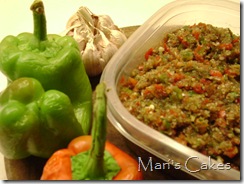
In every culinary tradition, distinctive condiments play a vital role in elevating the flavors of dishes. In Dominican cuisine, our go-to seasoning is what we affectionately refer to as 'Sazón.' This versatile blend is a staple in preparing a wide array of traditional delights, including beans, meat, rice, seafood, soups, stews, and pasta. Keeping it readily available in your kitchen can simplify cooking while contributing to a healthier dining experience.
Please note that the Sazón recipe I share here has been my trusted companion for over two decades in crafting authentic Dominican meals. Rest assured, I've yet to receive any complaints about its delicious impact! :o)
2 whole garlic heads
4 onions
5 bell or cubanelle peppers
1 cup chopped cilantro
2 chicken bouillons
¼ cup oregano
½ - 1 teaspoon allspice
2 Tablespoons Annatto (bija, achiote) or 1 tablespoon of Saffron
2 Tablespoons olives and capers
1 Tablespoon salt or to taste
¼ cup vinegar or sour orange juice
1 cup water to use only if needed
A little oil (optional)
Black Pepper to taste
Instructions:
Wash and cut all the ingredients into cubes and process until the desired consistency is achieved. In the blender, it comes out more liquid, and in the food processor, it comes out with small vegetable pieces (more chunky). If the consistency gets too thick, use small amounts of water until it continues to blend properly. It stores well for up to 2 weeks in an airtight container kept in the refrigerator.
Mode of use:
1. Season meats with or seafood with enough sazón, (use 1/4 cup for 2 LBS. or to taste) and place in the refrigerator covered for at least half an hour to marinate before cooking.
2. For all the other dishes, what we do is sauté enough seasoning to taste this process is called sofrito. To do this: in a hot saucepan place a little bit of oil and sauté the sazón, if tomato paste is used add it now. When it forms a thick sauce add it to cooked beans, in the water for cooking yellow rice, locrios or moros, soups or pasta.
Note: You can use more garlic if you like, but I prefer to process additional garlic separately with some salt and oil. I store it aside for recipes that require extra garlic, for example: steaks, beans, and soups, and for other recipes that do not require Dominican seasoning such as international meals.
Nuestro Sazón Natural (Sazón Criollo)
I dedicate this post to my mom and my sister Miriam for teaching me their cooking tips, for being excellent cooks, and for inspiring me to cook better each day.
"Silver or gold I do not have, but what I have I give you." - Acts 3:6
Text and Photos © Mari's Cakes
Mofongo (Mofongo Dominicano)
The Mofongo is delicious and easy to prepare. It is very popular in the Dominican Republic borrowed from Puerto Rico. Many restaurants serve a great variety of this dish, either accompanied by mondongo, shrimp, fried meat (salted beef) etc. The following is the traditional recipe.
,
Mofongo Dominicano con Chicharrón Recipe
Yield: Serves 8
Ingredients:
2 lbs. of pork Chicharron (crispy skin or rinds).
In the Dominican Republic, the chicharrón is pork skin and its fat in large chunks boiled in water until it becomes highly crispy.
2 ½ cups oil for frying
salt to taste
16 medium green bananas (plantains) peeled and sliced an inch thick.
6 cups of hot beef broth
2 teaspoons of slightly fried garlic in two tablespoons of oil.
Instructions:
In a pan fry plantain until they are golden on both sides. When fried sprinkle with salt and garlic.
In a mortar (for pounding) mash the fried plantains add the cooked pork rinds (chicharrón) and continue to pound until mixed completely.
Serve accompanied with beef or chicken broth and pour over mofongo, so it will be moist.
God Bless!
In a mortar (for pounding) mash the fried plantains add the cooked pork rinds (chicharrón) and continue to pound until mixed completely.
Serve accompanied with beef or chicken broth and pour over mofongo, so it will be moist.
Mofongo is a delectable dish, perfect for sharing with loved ones. This recipe is dedicated to all my friends and family residing outside the Dominican Republic, with heartfelt love.
Sopa de Pollo Dominicana
During the cold days, a hearty hen or chicken soup can be a comforting remedy for flu or for those holiday seasons when we've indulged in plenty of treats. I've always strived to recreate my mom, Nereida's delicious soup, as she is an exceptional cook. Being a fan of Dominican cuisine, I've mastered the art of cooking many traditional dishes. My cooking motto revolves around using natural ingredients such as garlic, oregano, salt, pepper, and a generous amount of cilantro.
The soup is a traditional dish and is one of the most popular in Dominican culture, consumed throughout the country. Preparing a Dominican-style chicken soup is an excellent way to enjoy the cuisine of this beautiful country.
Here's the first recipe I share in this blog for you to enjoy:
Dominican Chicken Soup (Sopa de Pollo Dominicana)
A delicious recipe for Dominican Chicken Soup. This broth can also be made with free-range chicken (Hen), taking into account that this meat will take a little longer to tenderize.
Ingredients:
• 3-pound chicken or hen
• 2 cups of auyama pumpkin cut into small cubes (divided for use)
• 2 medium carrots peeled and chopped
• 2 cups potatoes cut into cubes
• 2 plantains peeled and cut into pieces
• 2 medium yuca (cassava root) cut into pieces
• 1 medium onion chopped
• 1 cup noodles
• 2 aji gustoso (a type of chili pepper) minced
• 1 sprig of fresh rosemary
• 1 Tablespoon chopped parsley
• 1/4 cup of fresh cilantro chopped
• 3 Tablespoon of olive oil (divided for use)
• 1 tablespoon of garlic crushed
• 1/4 cup of the juice of a bitter orange or cider vinegar
• Approximately 1 gallon of boiled, hot water
• Salt and pepper to taste
Directions:
1. Begin by cleaning and cutting the chicken into small pieces. Season it with oregano, salt, pepper, garlic, peppers, onions, and cilantro. For easy seasoning, you can instead use 3 tablespoons of my Sazon Dominicano recipe.
2. In a saucepan, heat 2 tablespoons of oil. Add the seasoned chicken and sauté until it turns golden brown. Pour in 2 cups of hot water and let it simmer for 2 minutes. Then, add 1 cup of auyama (pumpkin) and let it simmer for 15 minutes. The chicken will release its own flavorful broth. For those using hen meat, adjust the amount of water and cooking time before adding the pumpkin, which may take 1-2 hours longer, and a few extra cups of water to get tender meat and a more flavorful broth.
3. In a larger pot for making the soup, heat 1 tablespoon of oil and sauté the chopped onions until they turn translucent and start to brown. Add the plantains and 2 cups of hot water, and let it simmer for about 5 minutes. Then, add the remaining auyama pumpkin, aji gustoso, potatoes, carrots, and cooked chicken with its broth. Add enough hot water to cover the vegetables and meat, ensuring an extra two inches above their level. Lastly, add the noodles when the potatoes begin to slightly soften.
4. As the broth thickens, add the parsley and rosemary. About 5-7 minutes before turning off the heat, be cautious not to overcook the potatoes and plantains, as they may become mushy, add the garlic, cilantro, bitter orange juice, and salt and pepper to taste. Remove from heat and let it sit for 5 minutes before serving!
Notes:
a) In step two, it's important to note that chicken cooks faster than other meats like hen or beef, which require more time to tenderize. When preparing Hen soup or beef soup, consider the additional time needed for these types of meats. Additionally, adding half of the auyama with the meat while it cooks contributes to achieving the desired texture and color in the broth.
b) In step four, for a quicker thickening process and enhanced visual appeal, consider removing herbs, peppers, and some of the veggies, and blending them into a thick paste to be added back into the pot. This method not only adds flavor but also helps thicken the broth.
Both of the tips shared in these notes also work when preparing the Sancocho recipe.
Pasteles en Hoja (Caribbean Style Tamales)
Pasteles, a traditional dish in the Dominican Republic and Puerto Rico, are similar to tamales but the difference is the ingredients used to make the dough. Pasteles en Hojas are particularly popular during the Christmas and New Year holidays. They are often served alongside roast pork and Rice with pigeon peas (Arroz con Guandules).
In the Caribbean, pasteles en hoja are made with a dough that includes green bananas and other starchy ingredients, rather than the corn-based dough used in tamales. The fillings, typically beef, pork, or chicken stews, are then wrapped in banana or plantain leaves and boiled for 30-45 minutes.
In addition to green bananas, plantains and yautia (yam) are also used in the dough. If only green plantains are used, the resulting dough will be tough, so ripe yellow plantains are often added to achieve the desired texture.
The bananas, plantains, and taro are left in salted water until you're ready to blend them, this prevents them from turning brown.
Over low heat sauté the annatto in oil or shortening.
The masa (dough) for pasteles en hoja is ready.
Pork shoulder seasoned with Dominican sazón.
Wash plantain leaves and steam them over the fire or in a pot of boiling water for a minute or two. This process will help them get more manageable.
Place pasteles dough over the plantain leaf and in the center. Top with the filling and fold over. Form in the shape of a small envelope.
Serve with ketchup or Tabasco sauce.
Dominican Pasteles en Hoja
Instructions:
24 green bananas
2 plantains
1 ripe yellow plantain
1 pound white yautia [malanga]
1 pound yellow yautia [malanga]
1 liter of milk or chicken broth
3 Tablespoons annatto (natural coloring )
2-3 tablespoons salt or to taste
½ cup oil or 1 cup shortening
Juice of 2 sour oranges
Banana or plantain leaves
kitchen twine for tying
Pork Stew Meat filling:
2 pounds ground beef or ground pork shoulder meat (I prefer to cook the pork meat cut into cubes until it’s very soft and break up pretty easily with a fork)
1 box of raisins (optional)
2 bell peppers
1 large onion
3 small cubanelle peppers
5 cloves of garlic mashed
2 Tablespoons olive and capers
2 Tablespoons tomato paste
Sour juice of 1 orange
salt and pepper to taste
1-2 cups of hot water
How to make them:
1. Preparing filling: Use the Pork stew, or beef picadillo recipe found here, Mari’s Cakes Picadillo de Res. In a large skillet heat the oil and stir-fry the meat until its color is no longer pink and has browned a little. Add all the other ingredients and enough hot water to almost cover. If you are using ground beef simmer for 30 minutes. If you decide to cook pork shoulder meat cut into one-inch cubes, increase simmering time by 30 minutes or until it’s tender, and reserve the tomato paste to add in the last 20 minutes of cooking. Try to leave with abundant sauce. Set aside.
2. For the dough (masa): Peel and rinse the bananas, plantains, and yams; cut into pieces and leave them soaking in water with salt, for about 30 minutes or until ready to process. Leaving them in water prevents them from darkening. Drain before using.
3. Sauté the annatto in oil or shortening. Be cautious and do not overheat the annatto or it will end up with a bitter taste. Reserve ⅓ of this mixture to grease each sheet of plantain leaves. Grate, blend, or process the starchy vegetables with the broth, annatto [achiote] mixture, and sour orange juice. Add salt to taste.
4. To assemble: Take a 10-inch square piece of plantain to leaf, grease it with some of the annatto oil, and place about ½ cup of the dough mixture [masa] in the center. Spread out a little and in the center add 2-3 Tablespoons of filling. Fold up like a letter, and fold in the two ends to seal completely. To secure it, tie it up tightly with kitchen twine. Aluminum or parchment paper can be used to help seal it even more, or to be able to use smaller size plantain leaves. Continue packing like this until all the masa is used.
5. Preparation: Store uncooked in the freezer for up to one month. Cook in boiling water for 30-45 minutes. Unwrap and serve hot. Serve accompanied with ketchup or Tabasco sauce. Note: For every liter of water used to cook the pasteles add one tablespoon of salt.
Yield: 30 medium-size pasteles.
Rejoice always, pray continually, give thanks in all circumstances; for this is God’s will for you in Christ Jesus. - 1 Thessalonians 5:16-18











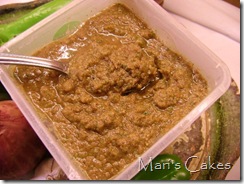
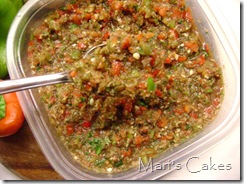
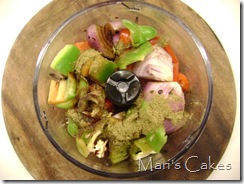
.jpg)


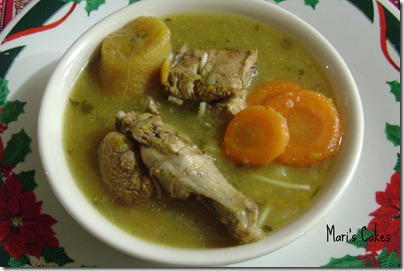

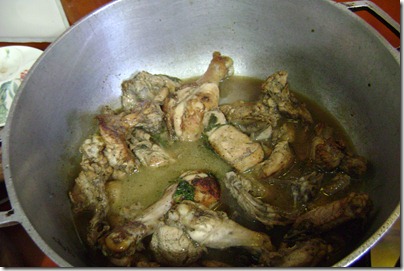

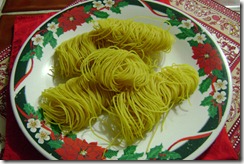
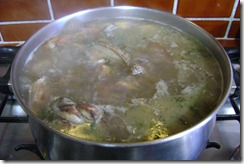
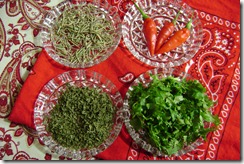
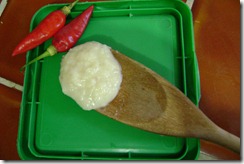


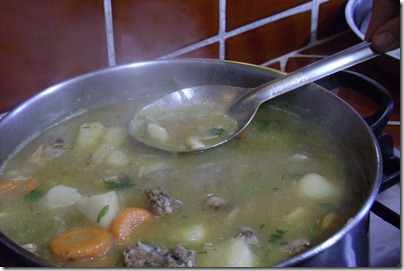
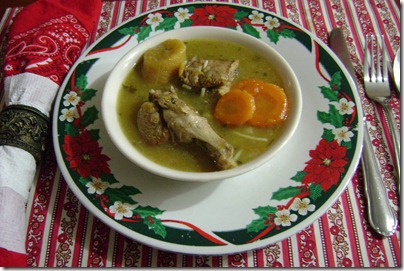




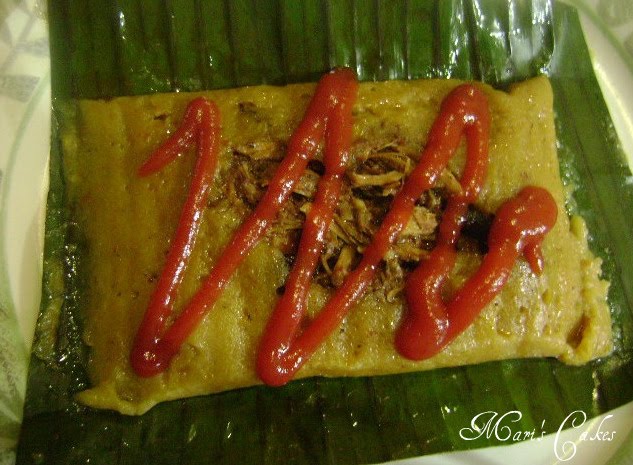



Keep in touch